
The third most populous and forth largest island in Seychelles, La-Digue is well renowned for its world-class beaches and significant tortoise population. Devoid of any road traffic, pollution and mass tourism, the island is a laid-back place where one can enjoy the archipelago’s natural scenery at its fullest glory. Surprisingly, alongside its shimmering sandy beaches and turquoise ocean waters are numerous unusual sites to explore, documented as well in this series of photographs.
There are several ways of getting to the island of La-Digue, yet none are as fast, efficient and reasonably priced as the ferry service from Victoria’s seaport. There are two main companies, Cat Cocos and Inter Island Ferry, that operate a daily ferry ride from Mahe to La-Digue via Praslin.
Take note that the timetable varies seasonally, therefore it’s recommended to book the tickets in advance. During weekends the ferry service is far more extensive as several trips are added, making it feasible to venture out in the morning and come back to Mahe at evening time.

photography by: Omri Westmark
The inter-island journey starts with a two-hour ferry ride from Victoria to Praslin, followed by a short 15-minute trip from Praslin to La-Digue. As you get closer, the island’s dark green rainforest becomes vastly apparent, particularly if you opt to stay at the ferry’s bow during the final leg of the journey.
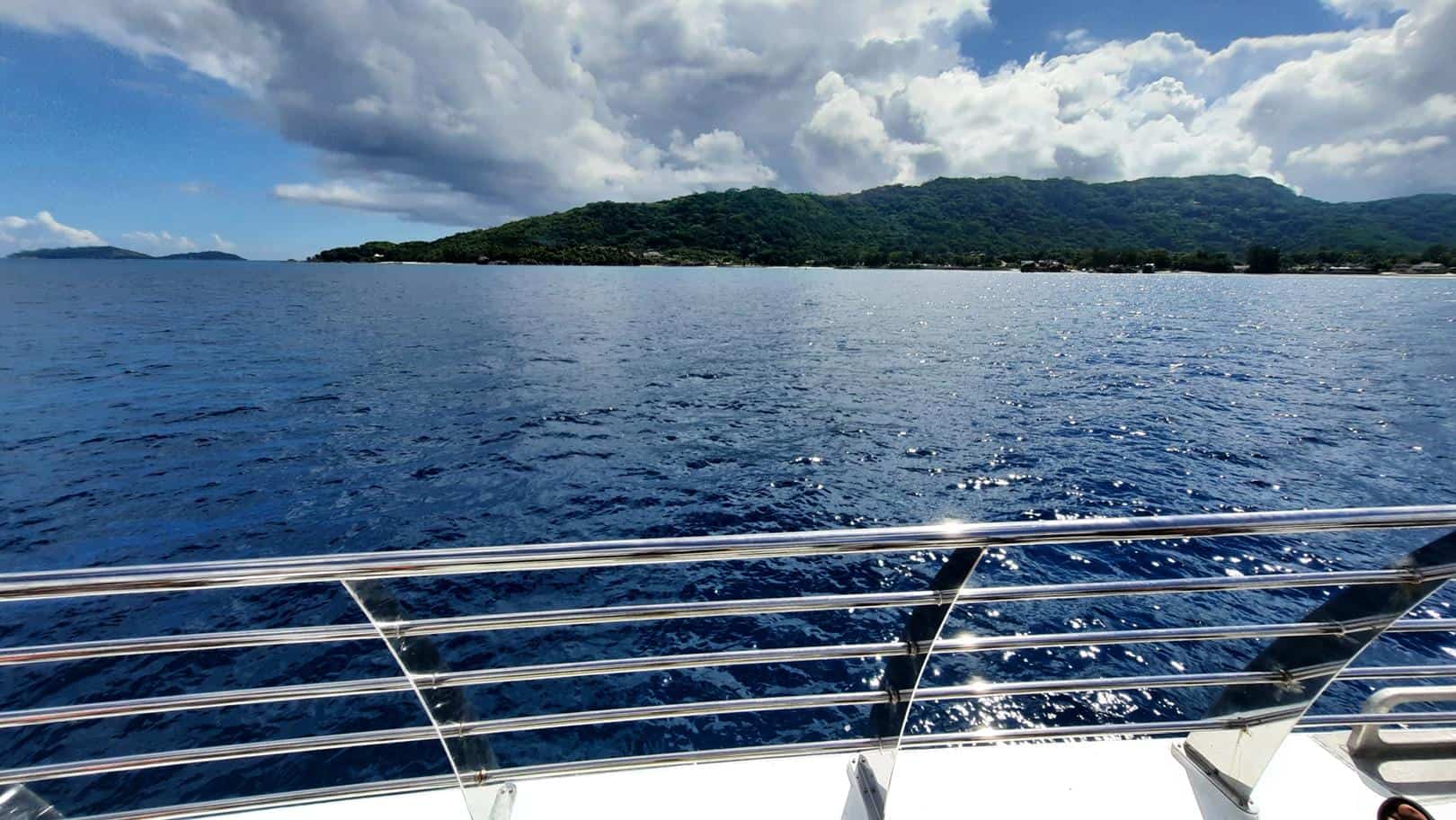
photography by: Omri Westmark
Up until recently cars were completely banned in La-Digue, and while it’s no longer the case, bicycles are the only true mean of transportation throughout the island. The moment you disembark the ferry you’ll most probably be greeted by several owners of bike rental shops who offer a bicycle for 5-10 dollars per day. The island’s network of well-kept cycleways makes it a truly pleasant and convenient way of exploring all of its wonders.
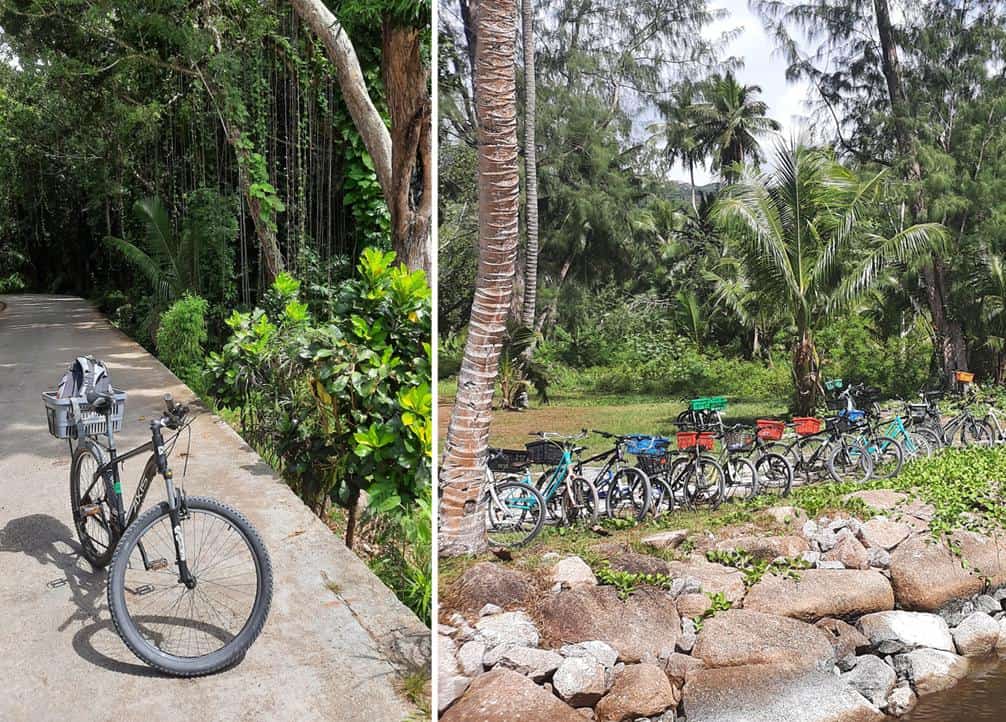
photography by: Omri Westmark
South of Veuve Nature Reserve lies a roadside Catholic shrine honoring Virgin Mary. The small chapel is elegantly placed inside a pile of Seychellois granite rocks, literally fusing the Christian faith with one of the country’s most recognized symbol.
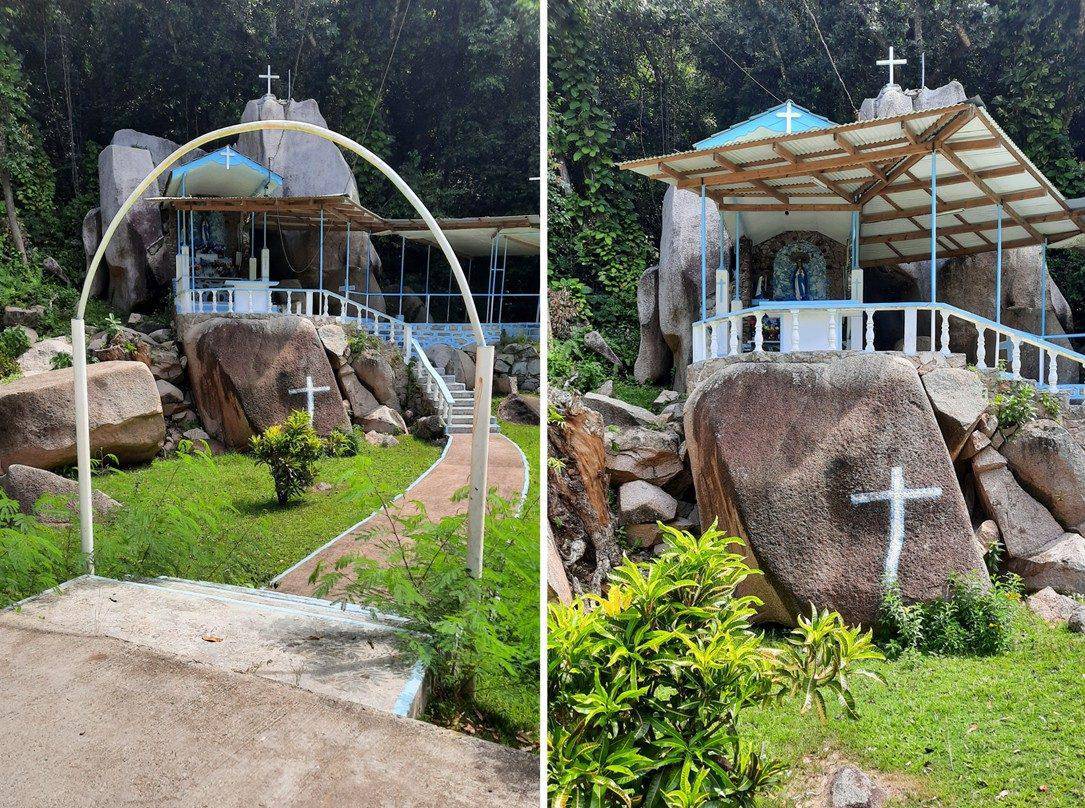
photography by: Omri Westmark
Once you get to the island’s coastal area, it’s no longer possible to ride on bicycle as all paths are covered by sand. Make sure you bring your flip flops since any attempt to walk barefoot on the hot sand is extremely challenging.
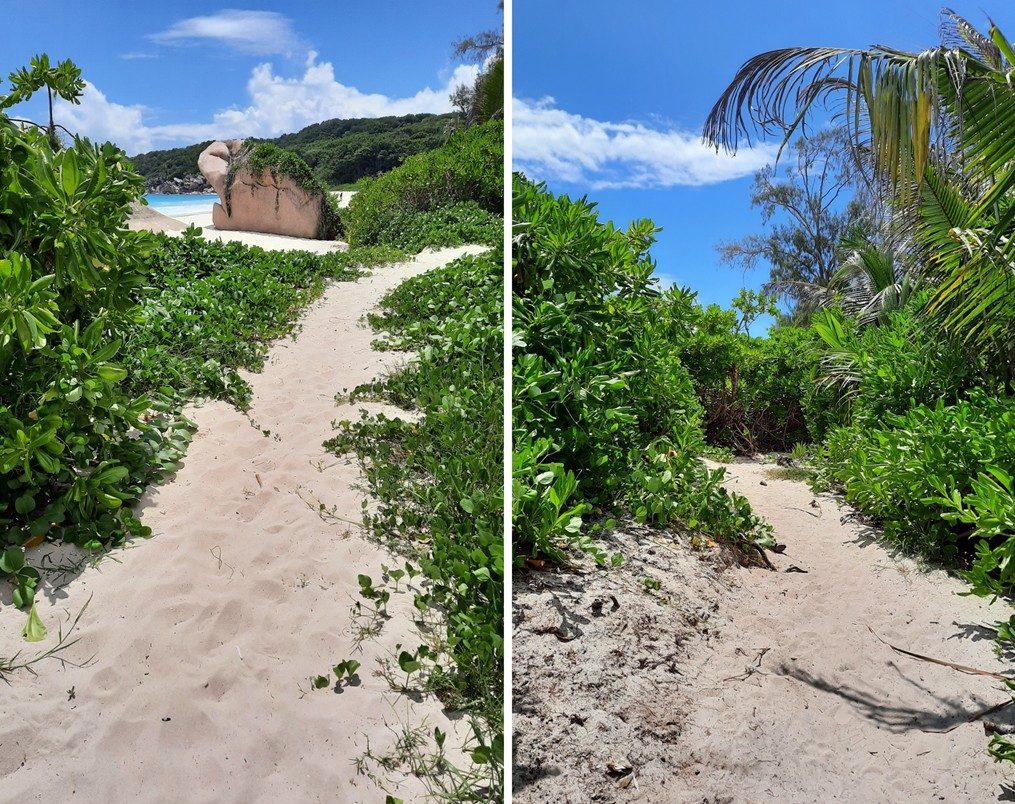
photography by: Omri Westmark
Some beaches across the island are frequented by vendors, who cut open coconuts and sprinkle inside a lemon-flavored powder that together with the coconut water makes a refreshing drink.
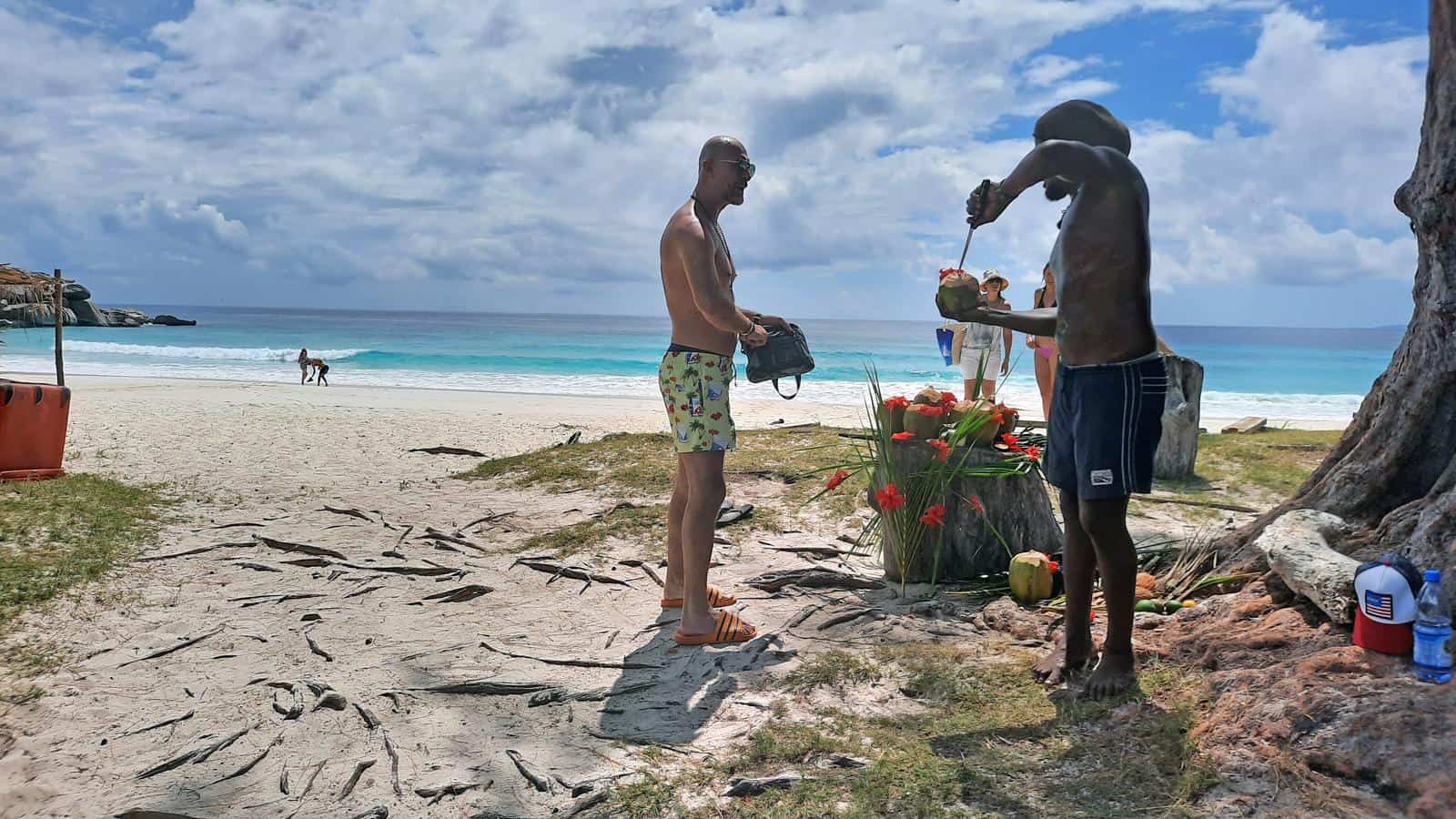
photography by: Omri Westmark
La-Digue is home to plenty of painfully beautiful beaches, among them is Grand Anse Beach, a strip of white powdery sand and emerald blue waters.
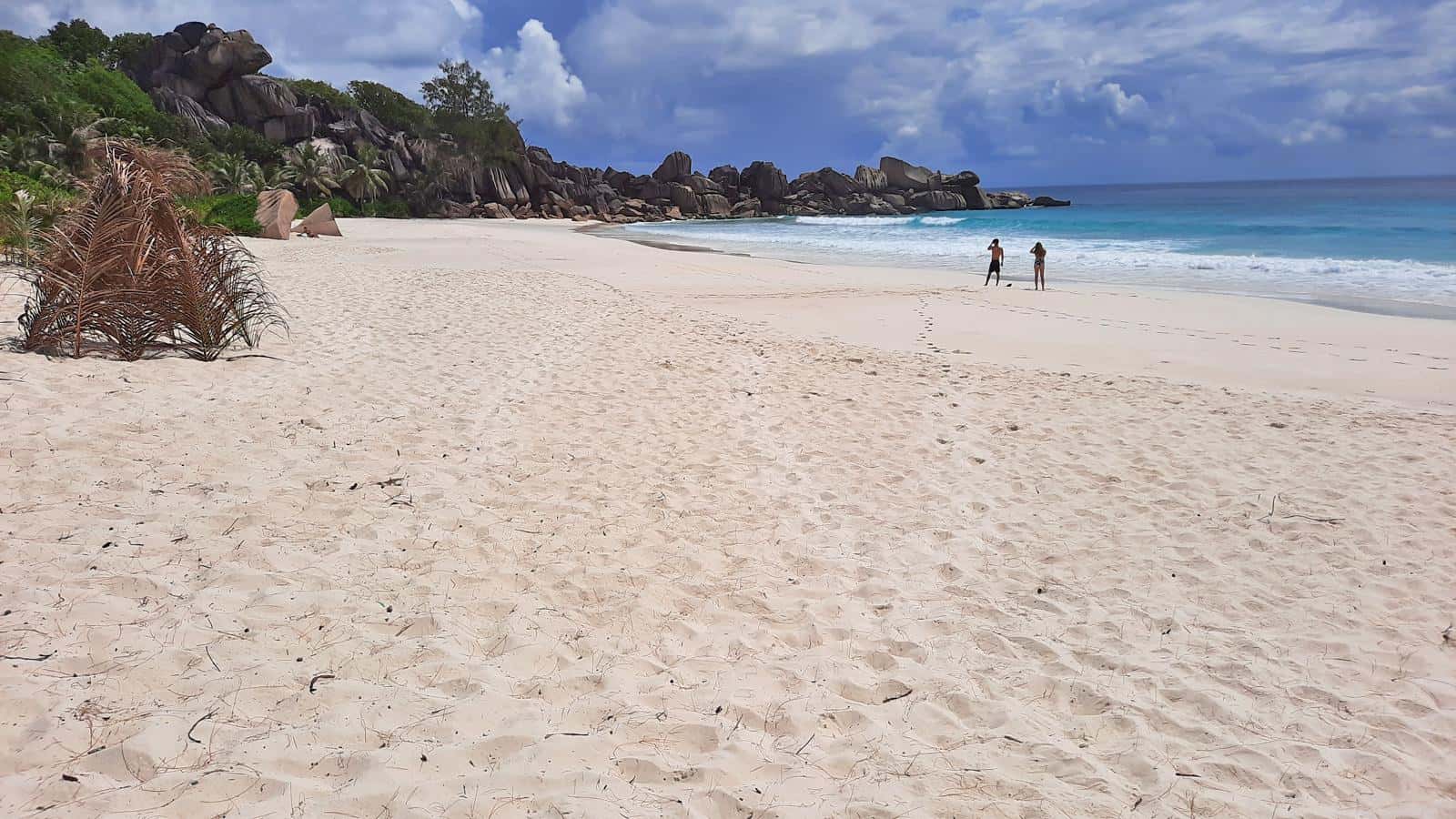
photography by: Omri Westmark
Despite its calm appearance, the ocean around Grand Anse is not suitable for swimming due to strong hidden currents, but don’t worry since you still have this entire magnificent beach for yourself, as it is mostly empty all day long, all year round.
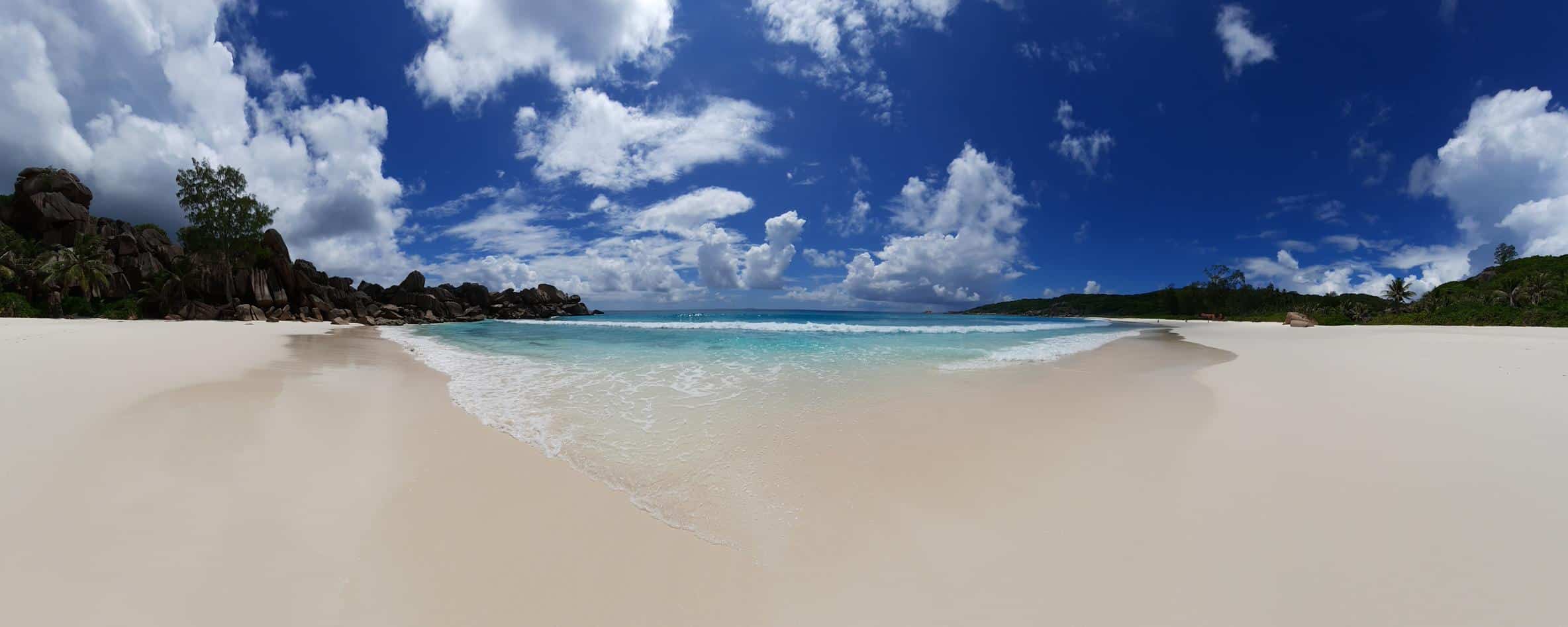
photography by: Omri Westmark
The equatorial sun is unforgiving, especially at mid-day during a cloudless day, yet luckily, the rock formations around the beach have several cavities that serve as the perfect refuge from over tanning without blocking the surrounding sights of the ocean.
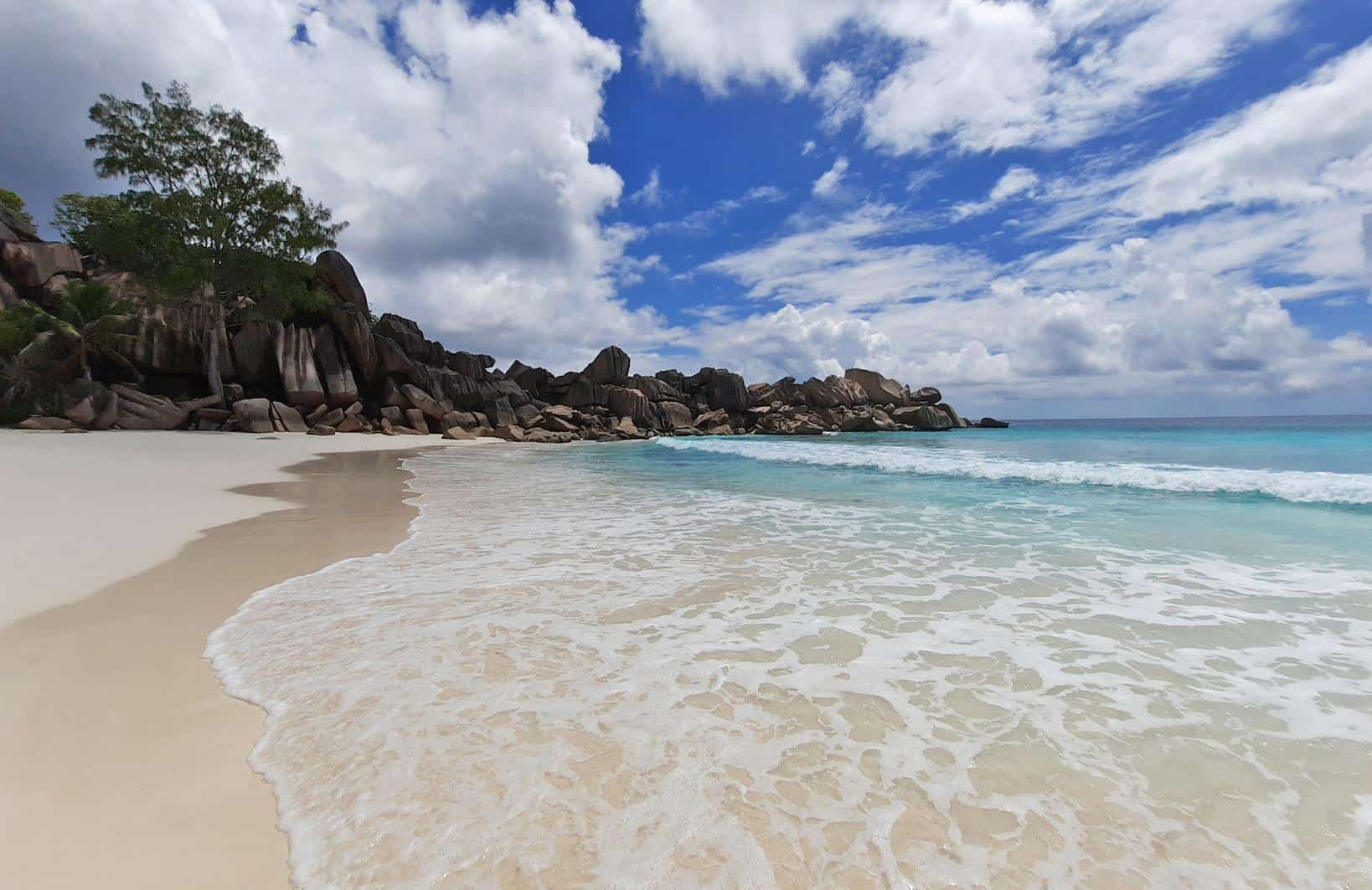
photography by: Omri Westmark
Tucked away along the Grand Anse Beach, this tidal marshland is the beating heart of a rich ecosystem that protects the coastline from erosion. Its extremely murky waters are the result of clay, silt and decayed organic matter, all of which making the pool surface spectacularly reflective.
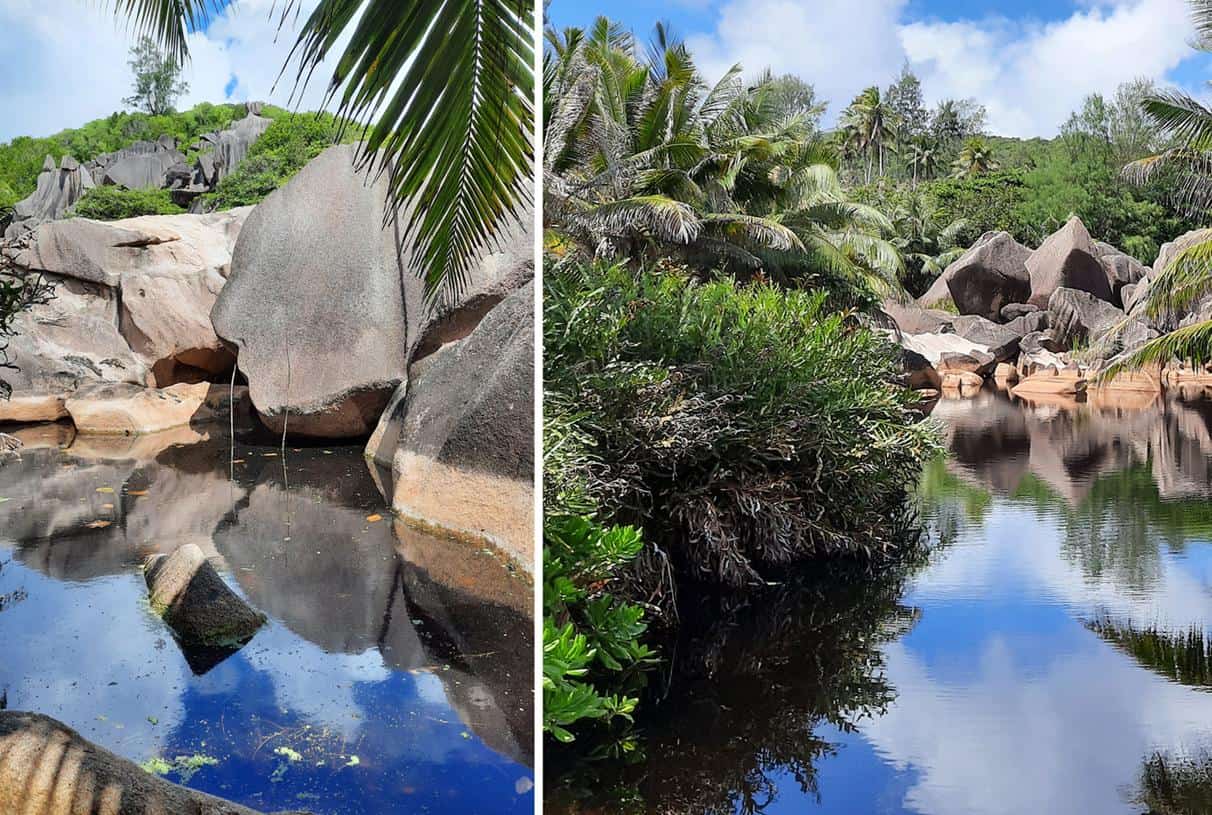
photography by: Omri Westmark
Grand Anse Beach (Great Anse Beach) borders a twin, yet smaller beach which unsurprisingly bears the name Petite Anse Beach (Small Anse Beach), accessible via a short pathway through a coastal thicket.
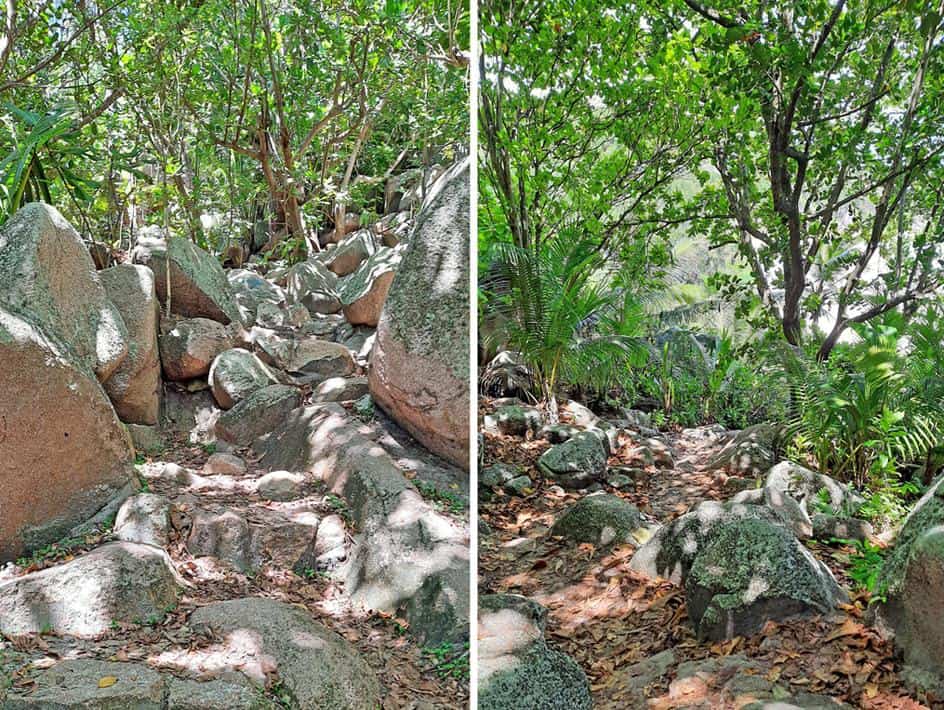
photography by: Omri Westmark
Petite Anse pretty much resembles its larger peer with the slight exception of being more isolated and therefore even less visited by sunbathers and toe dippers.
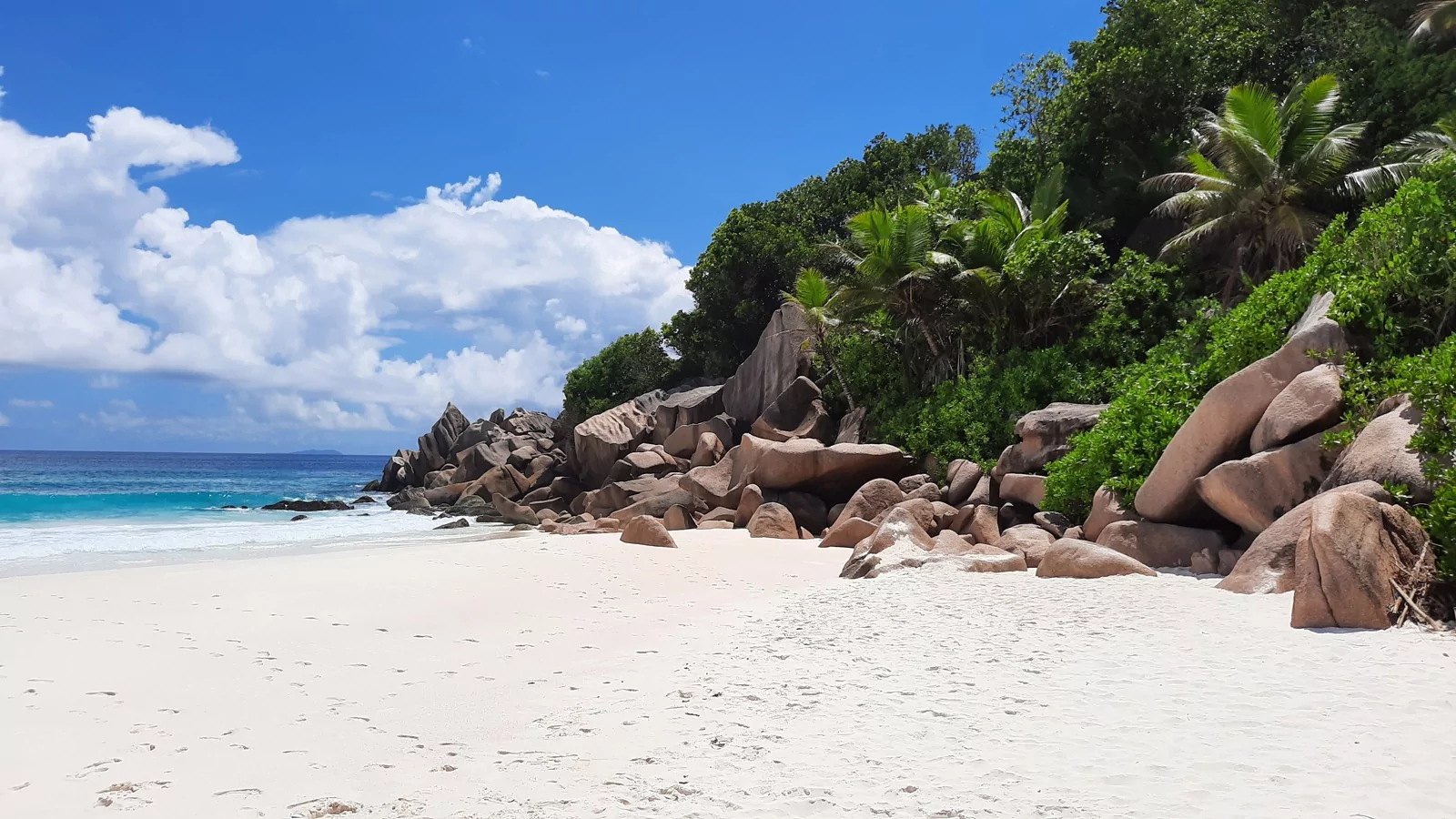
photography by: Omri Westmark
The ocean around the beach tends to be rough as well, making the surrounding waters too risky for swimming.

photography by: Omri Westmark
Due to its remote location the beach lacks any kind of facilities, besides a couple of fragile huts made of coconut fronds.
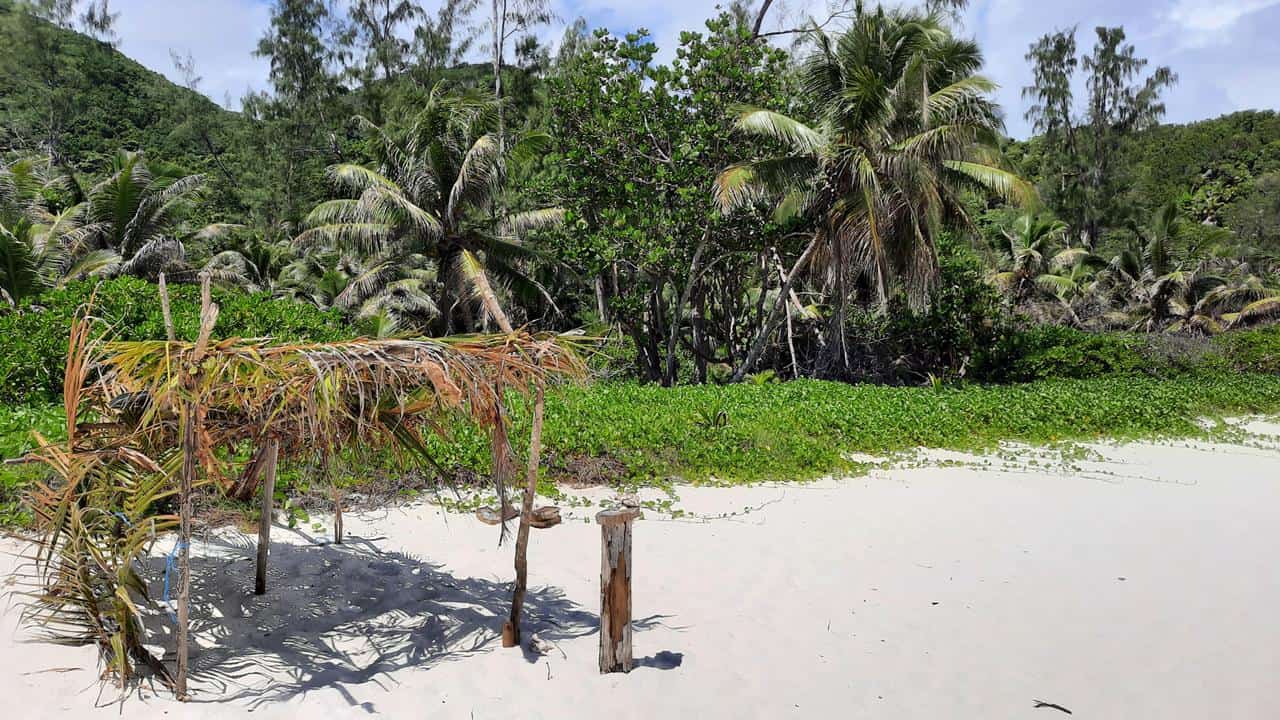
photography by: Omri Westmark
A panoramic view of Petite Anse Beach and its sheer emptiness.
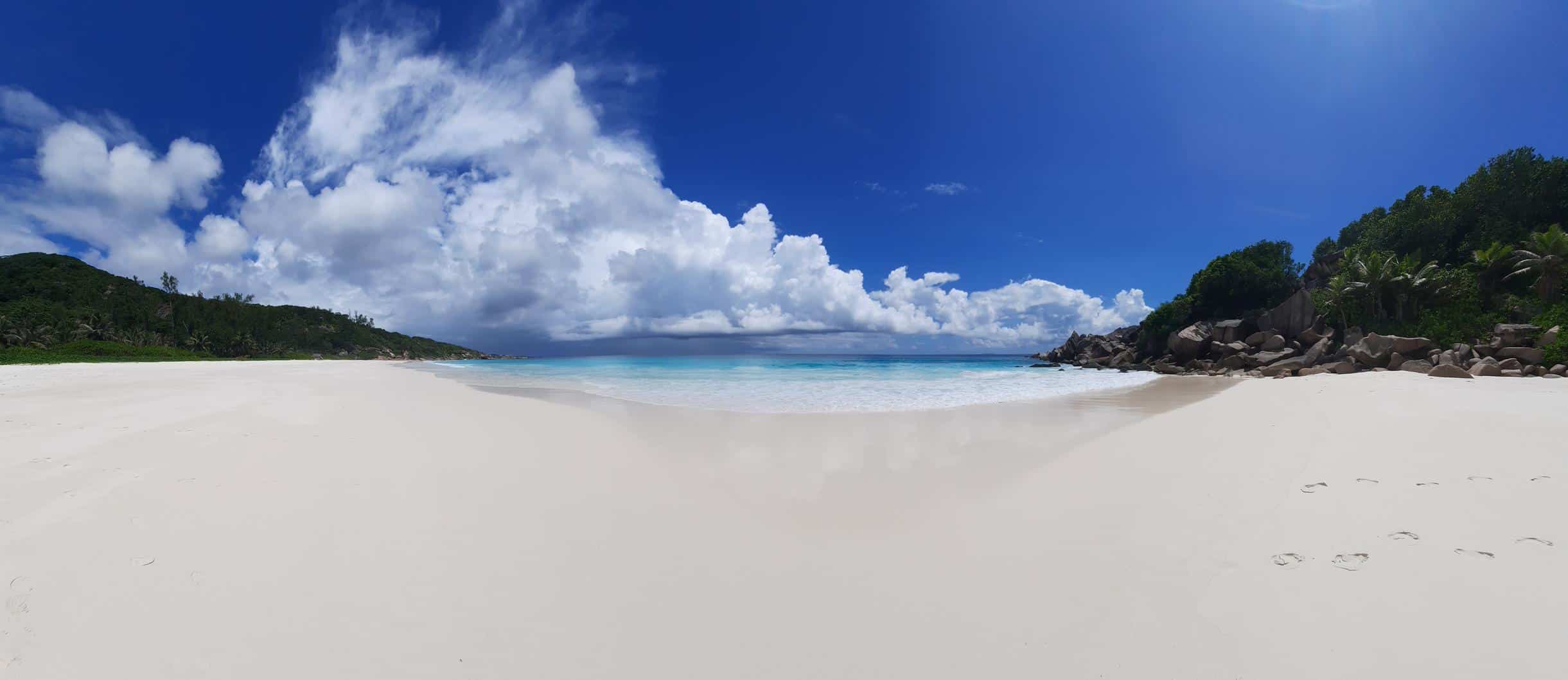
photography by: Omri Westmark
It’s most often the case where the only sign of human presence throughout the beach are the few sandy footprints that still haven’t been washed away by the waves.
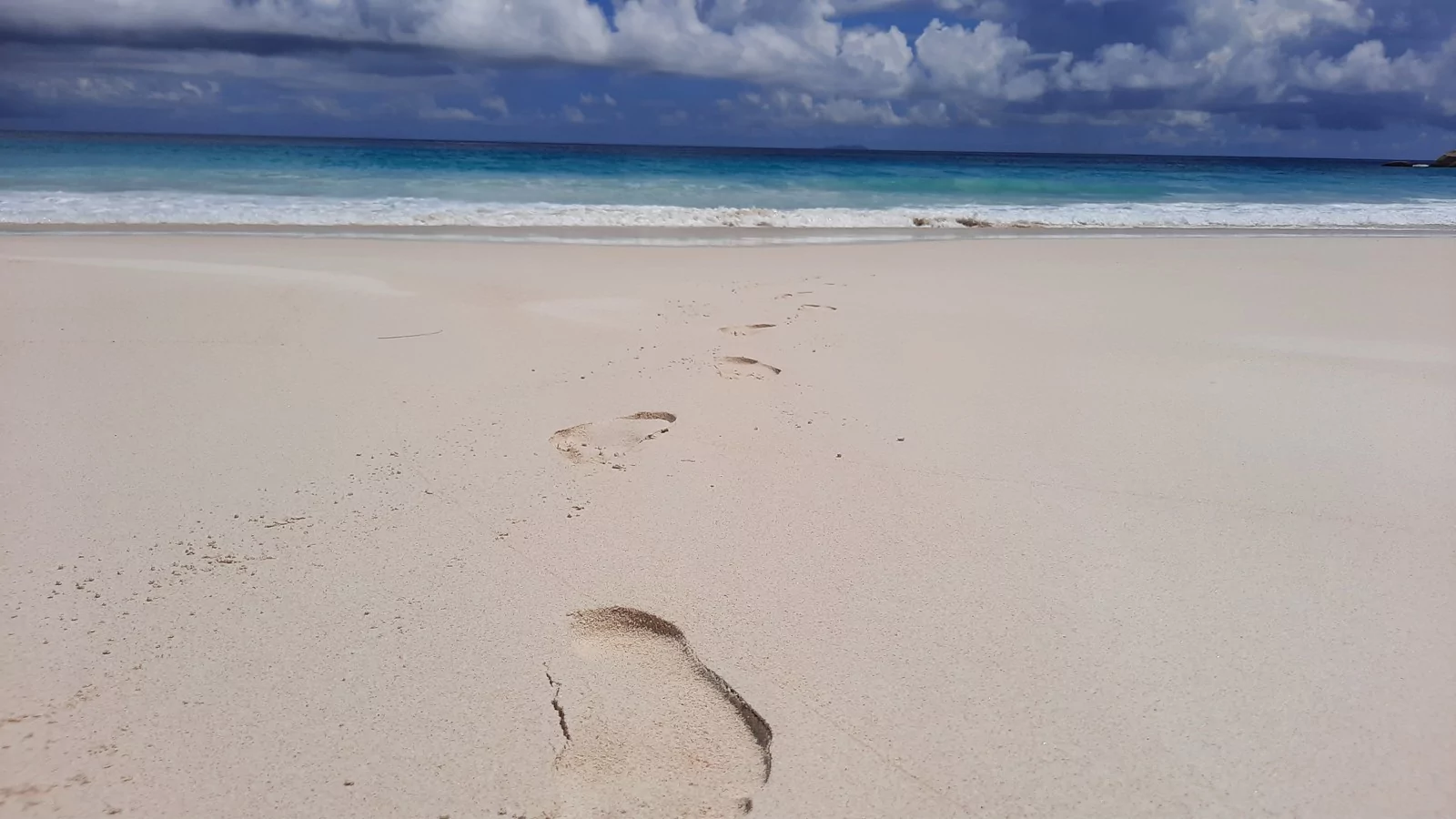
photography by: Omri Westmark
The beach has stunning rock formations at both of its sides, providing a habitat for a plethora of native species of crabs, reptiles, birds and even occasionally bats.
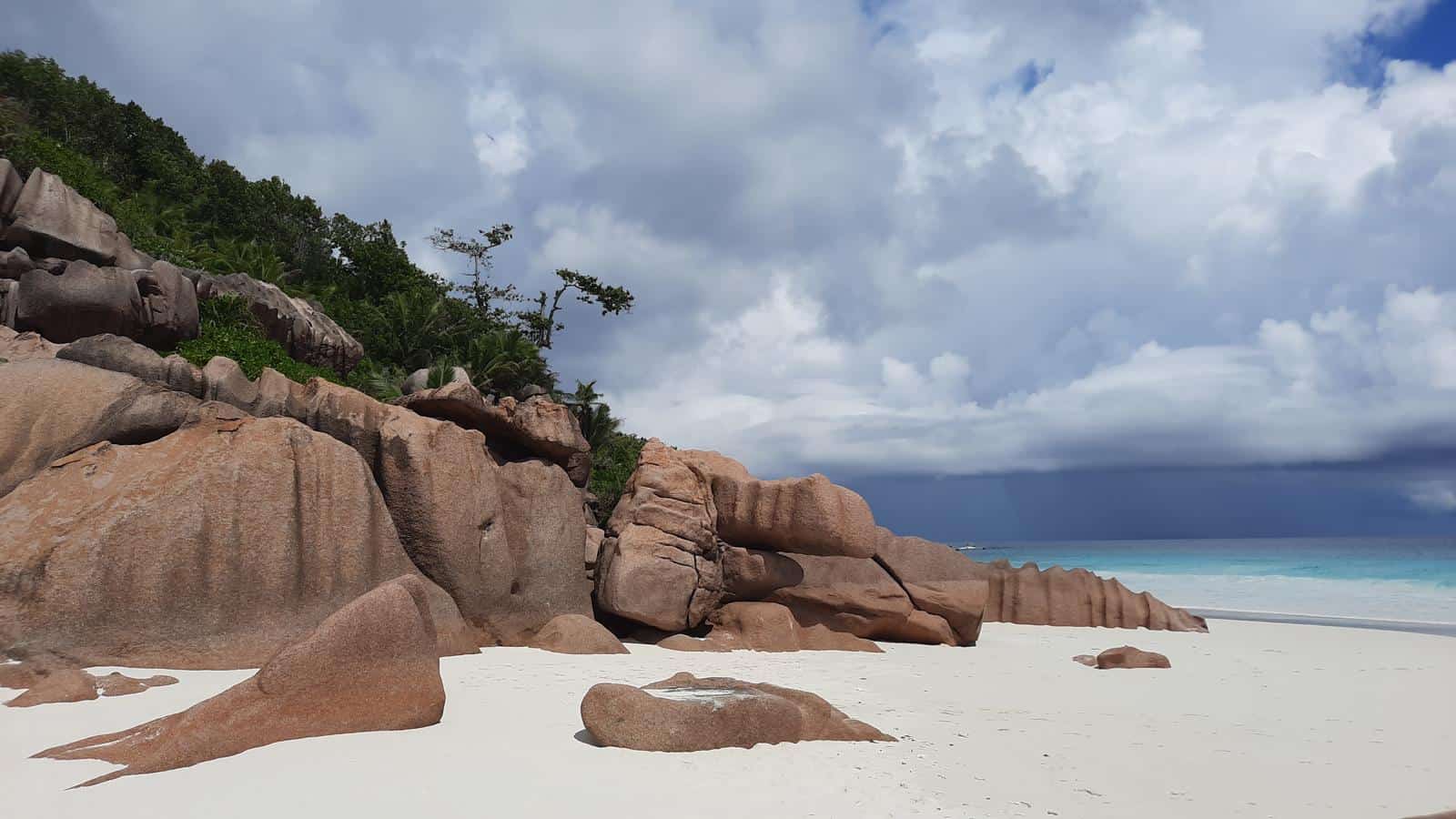
photography by: Omri Westmark
Along the beach inner side lies a strip of short coastal vegetation that separates it from the surrounding tropical woodland.
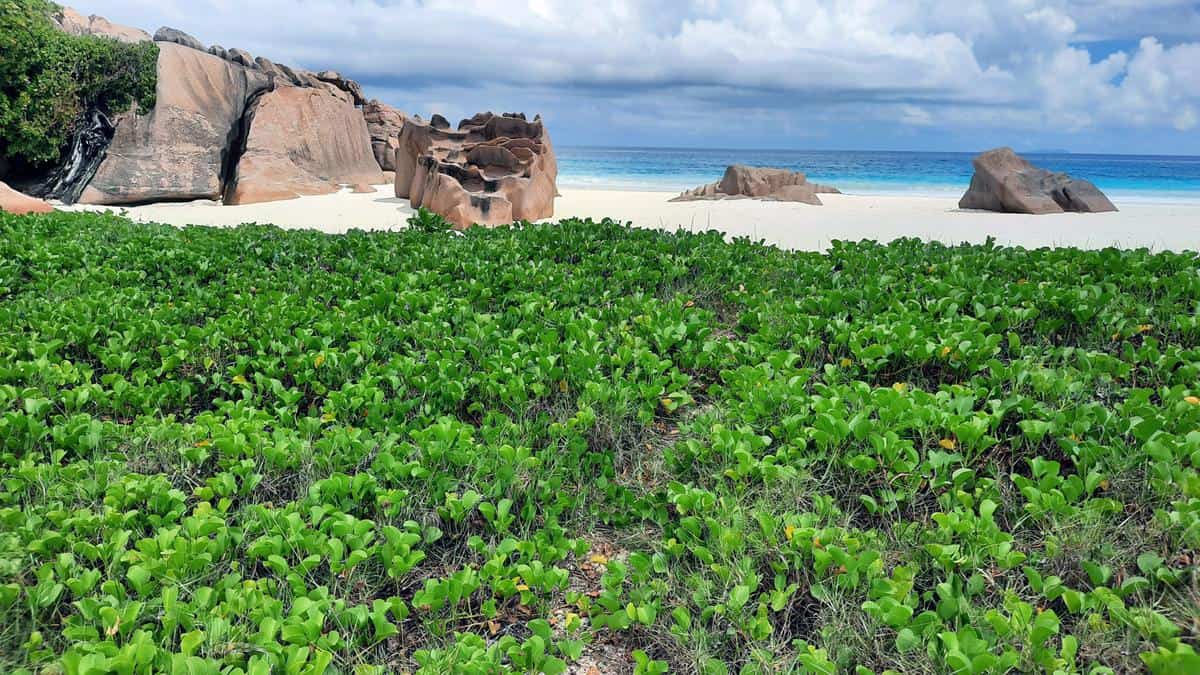
photography by: Omri Westmark
Nestled on La-Digue’s west coast, L’Union Estate Park is probably the most visited place throughout the island and rightfully so, as this patch of land isn’t just abundant with rich historic sites but also home to one of the world’s most beautiful and famed beaches.
Take note that the park charges a small admission fee of 115 SR.
L’Union Estate served for centuries as a European owned farm, cultivating coconuts, vanilla and sugar canes. Surrounded by an intricately designed garden, the colonial style plantation house is the former dwellings of L’Union Estate’s owner, and where high-ranking officials used to stay during their visits to the island.
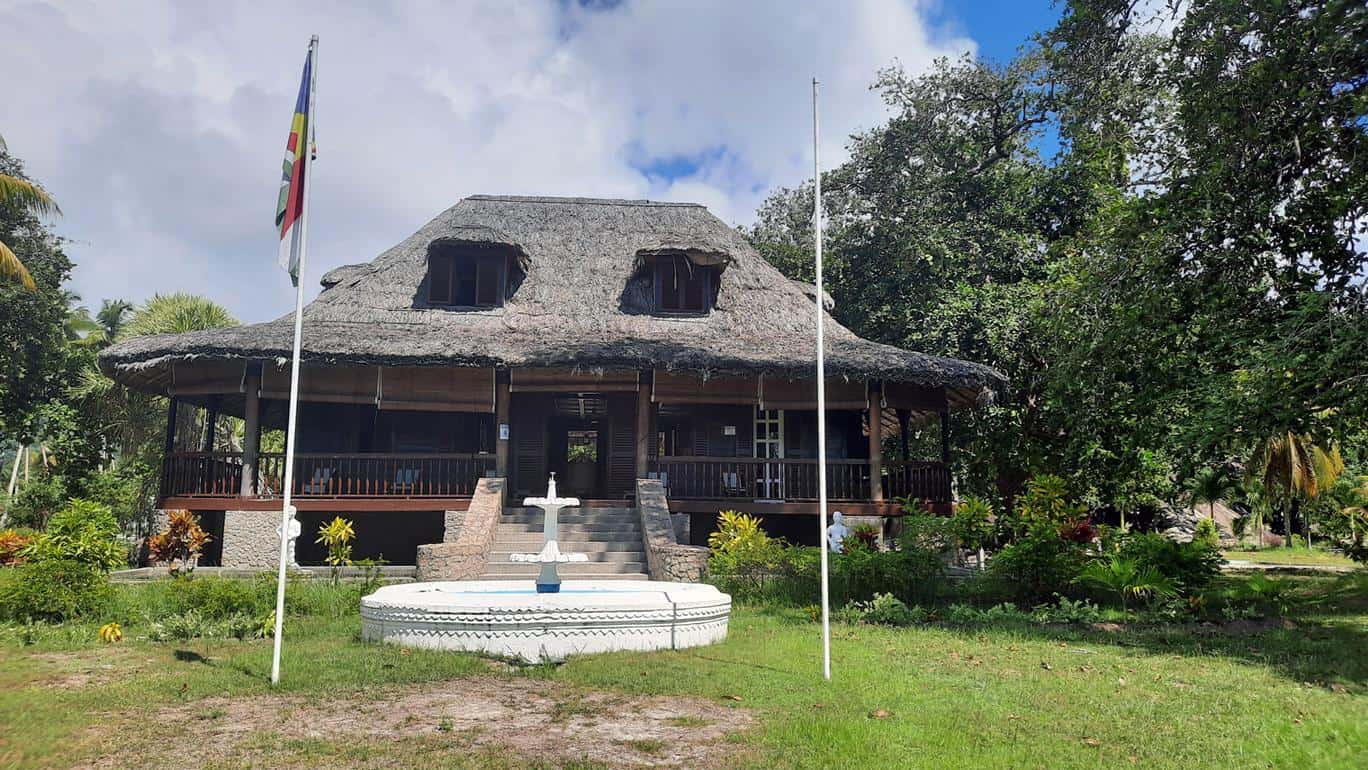
photography by: Omri Westmark
The wooden house is well preserved, showcasing its authentic interior space and lavish furniture, additionally, the movie “Goodbye Emmanuelle” was partially filmed here.
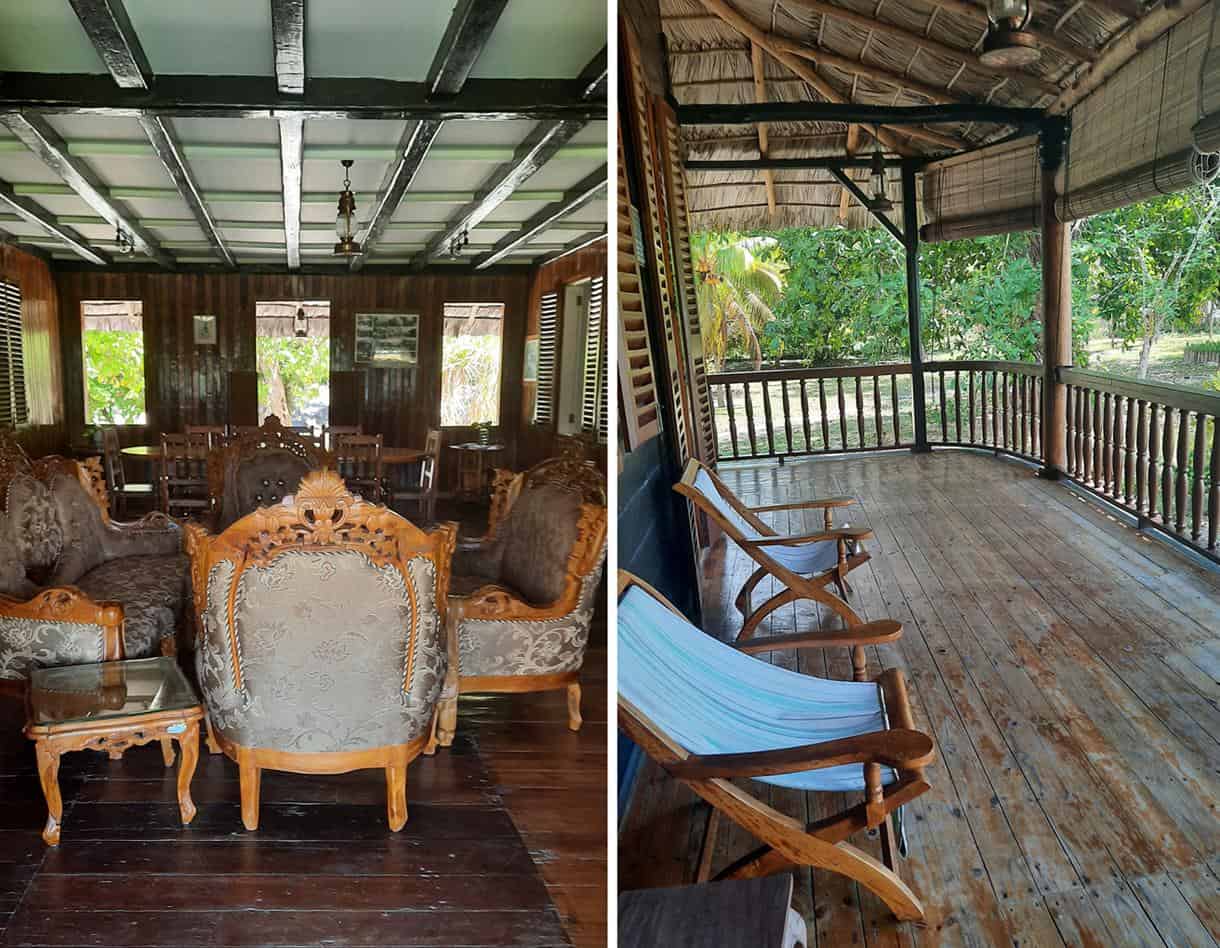
photography by: Omri Westmark
L’Union Estate is also home to numerous other buildings, all of which are renovated while some were also repurposed. Unlike many heritage sites worldwide, the houses across the farmland are far from being exaggeratingly preserved and thus retain a decent level of authenticity.
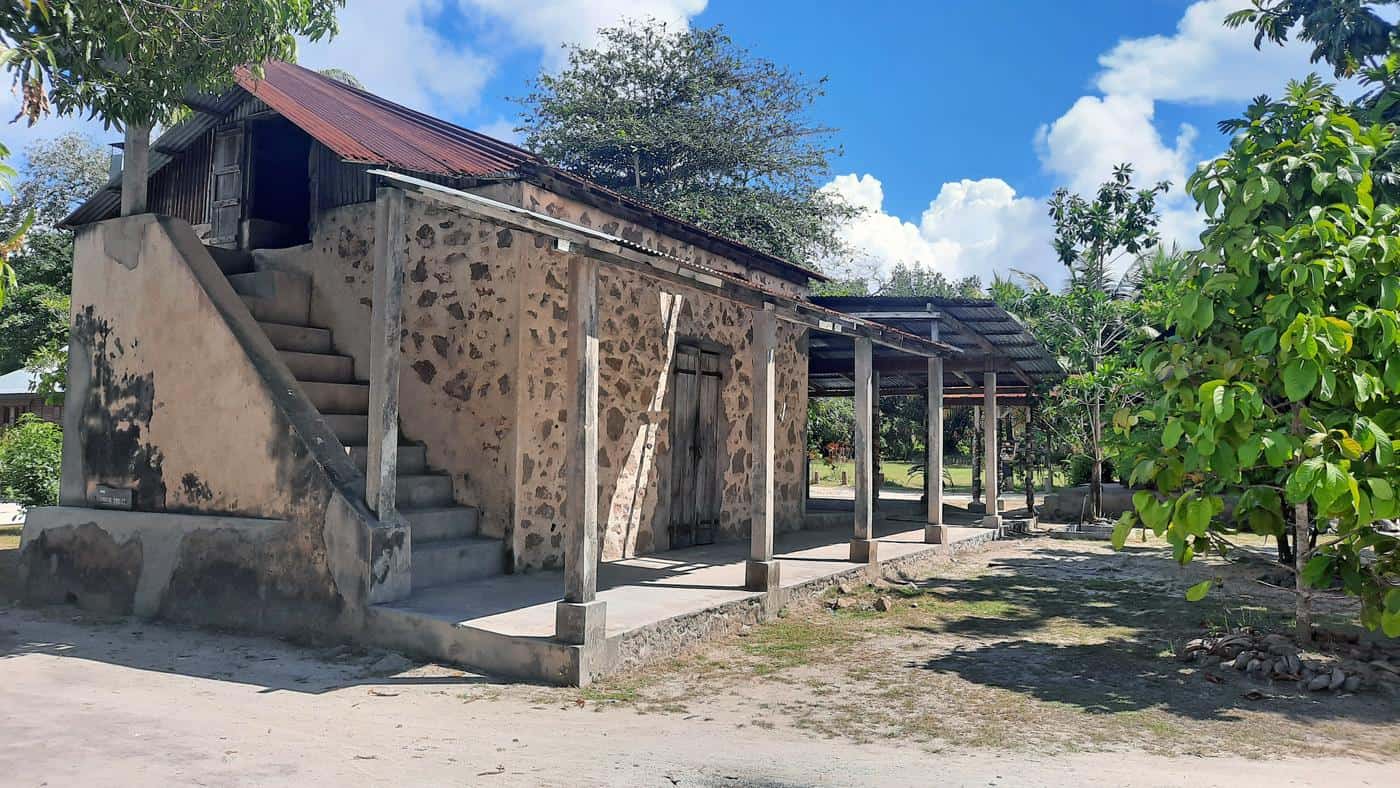
photography by: Omri Westmark
Originally, the farm was mostly dedicated to the production of palm oil, made by an ox-powered mill that compressed stacks of copra (dried coconut flesh) into the precious oily liquid.
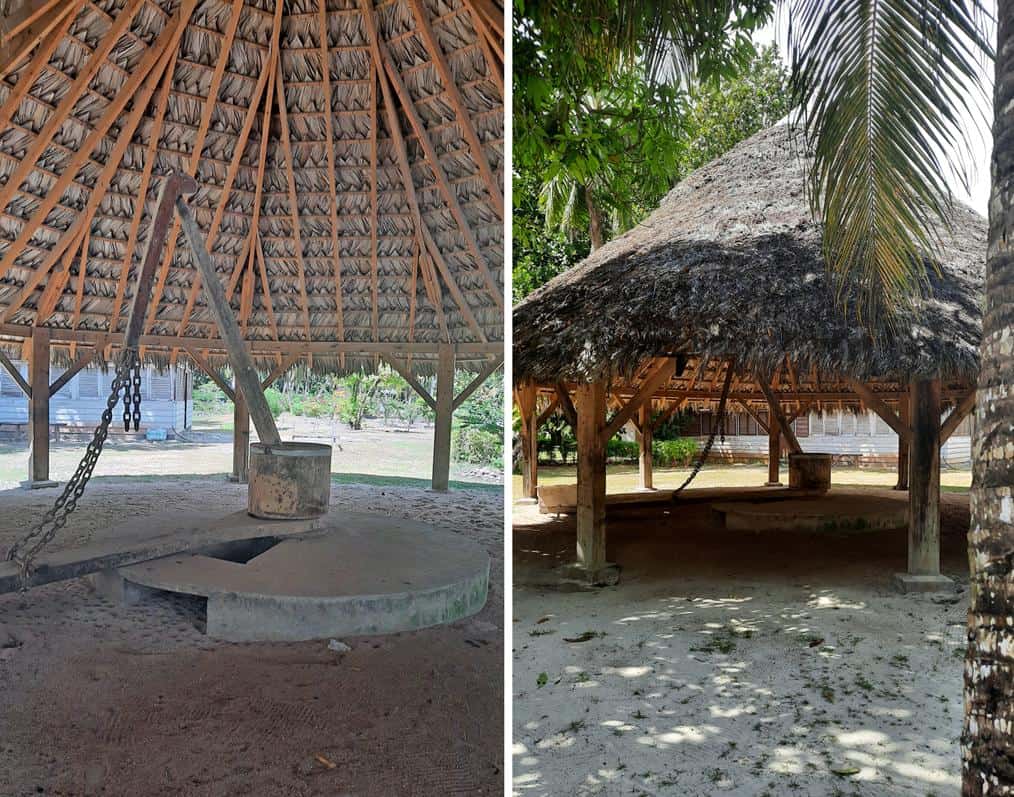
photography by: Omri Westmark
Adjacent to the formidable granite Union Rock is a tortoise enclosure with dozens of these majestic shell-dwellers roaming around. Like in the case of Moyenne Island, the giant tortoises were brought here from other islands across the archipelago.
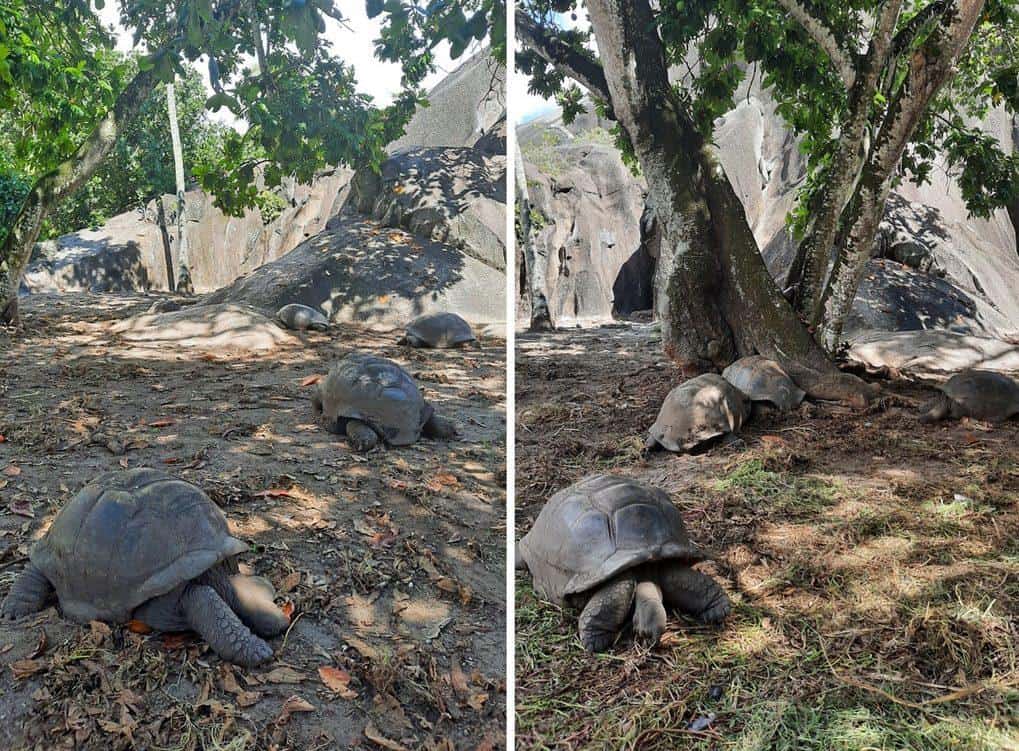
photography by: Omri Westmark
Surprisingly, some of L’Union Estate’s plantations are still used to grow vanilla and sugar cane as it was during its heyday, in fact, a souvenir shop that resides in one of the preserved historic buildings sells a locally made vanilla sticks and extract.
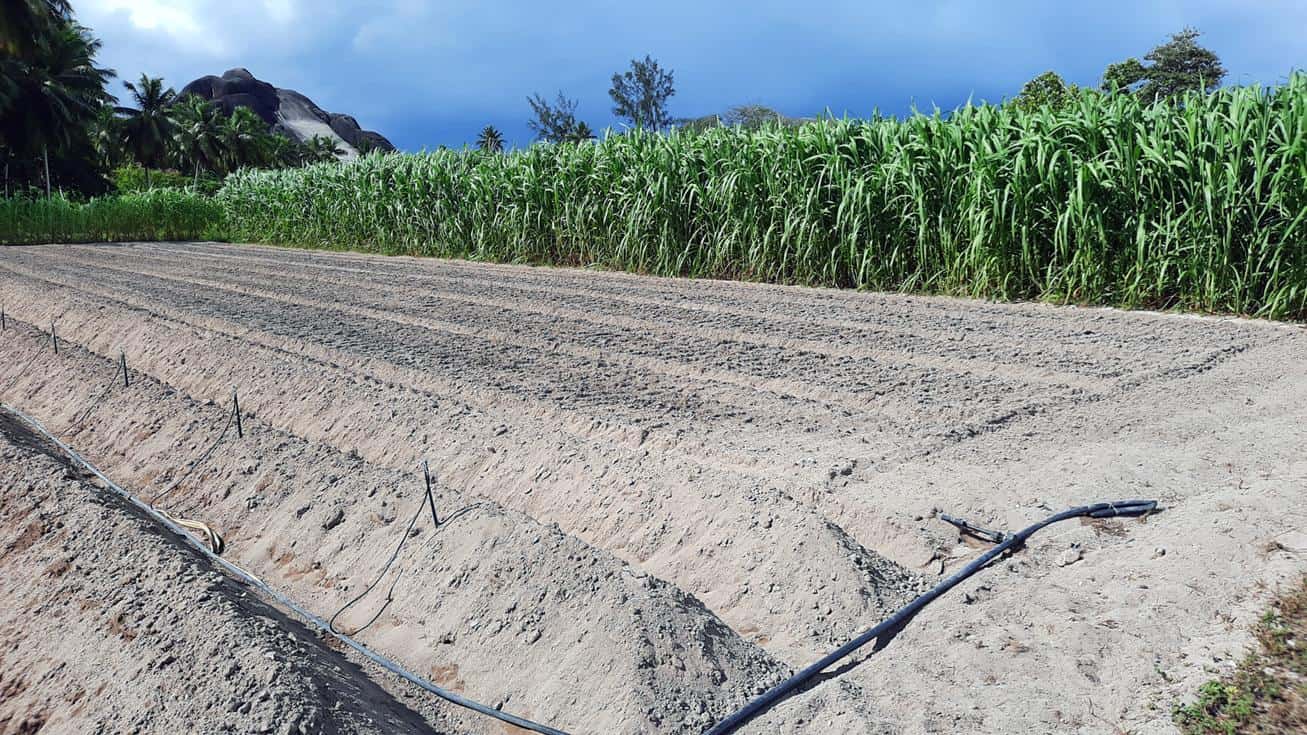
photography by: Omri Westmark
Covered by soft white sand, dominated by gargantuan granite boulders and bestowed with crystal clear ocean waters, it isn’t difficult to understand why Anse Source d’Argent is often deemed as one of the world’s most beautiful and photographed beaches.
Take note that Anse Source d’Argent is accessible solely via L’Union Estate, therefore in practice you cannot visit the beach without paying the park’s admission fee.
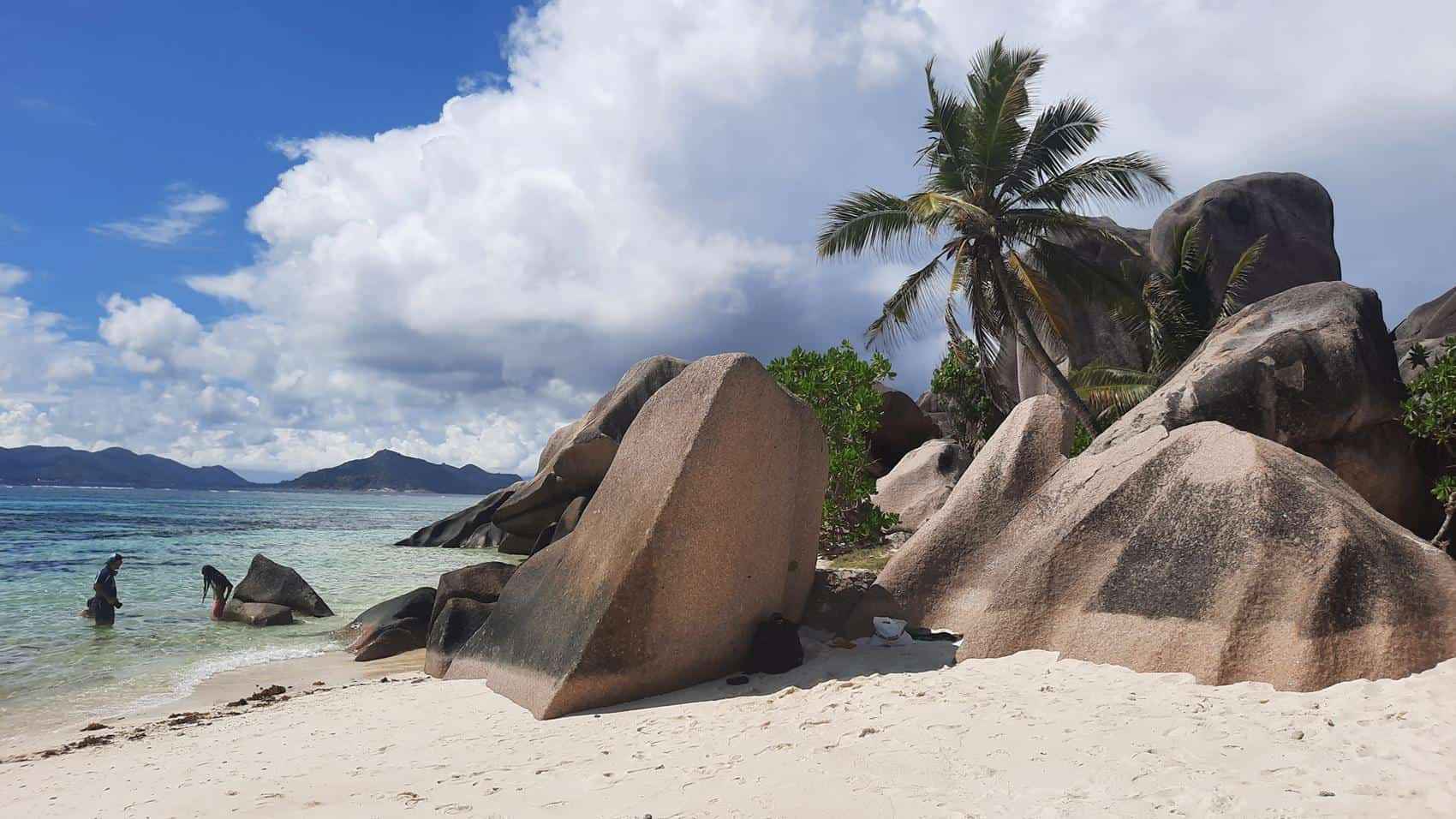
photography by: Omri Westmark
The beach’s shallow waters, particularly during low tide, make it ideal for swimming and wading. If you want to avoid the occasionally large throng of sunbathers, then consider going early at the morning or around sunset time.

photography by: Omri Westmark
Hidden within the lush coconutty vegetation next to the shoreline, this brilliant beach stand offers a plethora of sliced fruits and freshly picked coconuts, strengthened with a local rum by request and best enjoyed while ocean gazing.
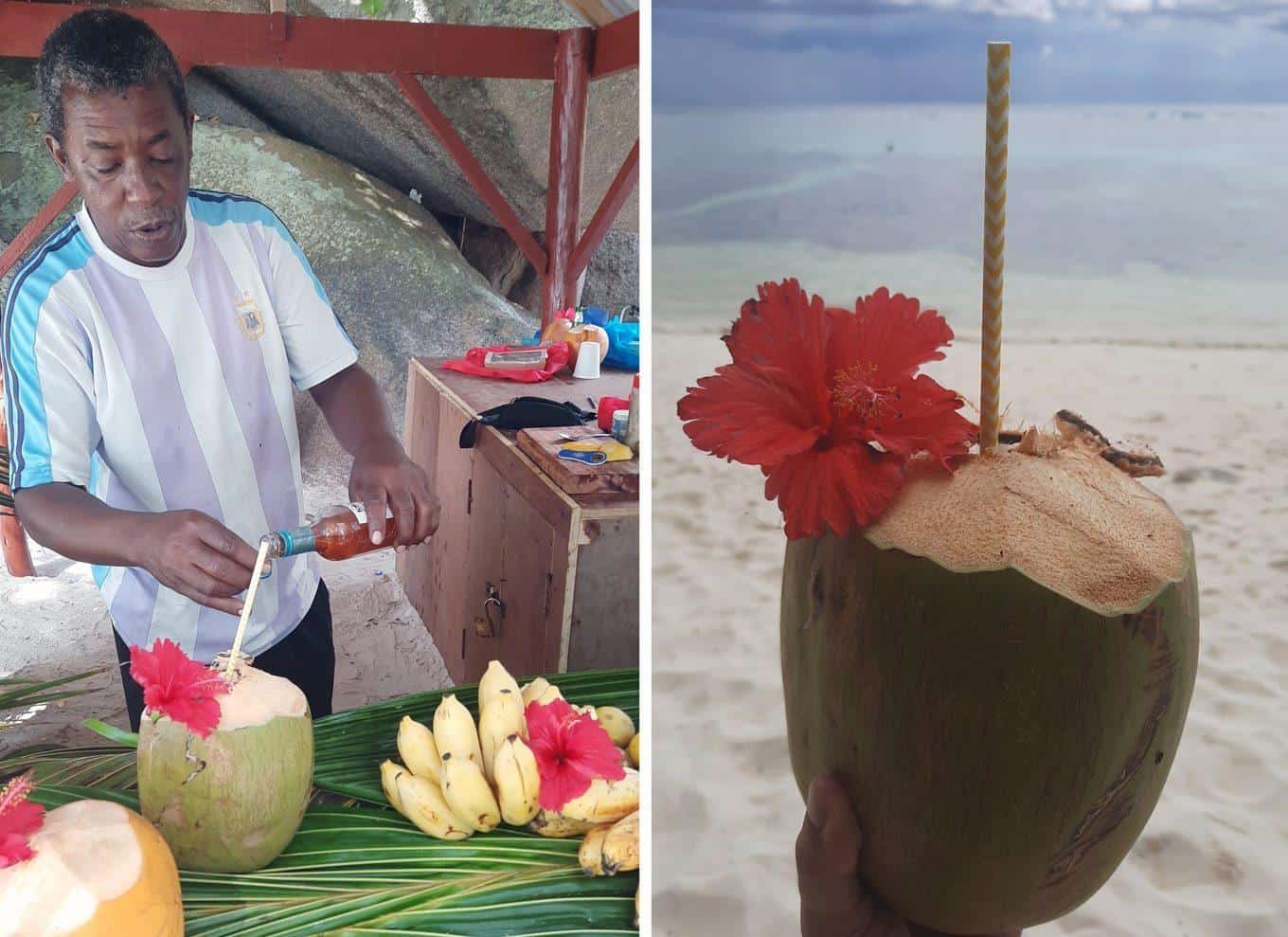
photography by: Omri Westmark
Sometimes as a result of stormy weather, bundles of seaweed get washed to the beach, yet even this temporary eye-sore is not nearly enough to eclipse the immense beauty of Anse Source d’Argent.

photography by: Omri Westmark
A panoramic view of Anse Source d’Argent Beach. Every so often, when the weather turns out to be unpredictable, the nearby shrubs and bending palms serve as the perfect refuge from the strong tropical rain.
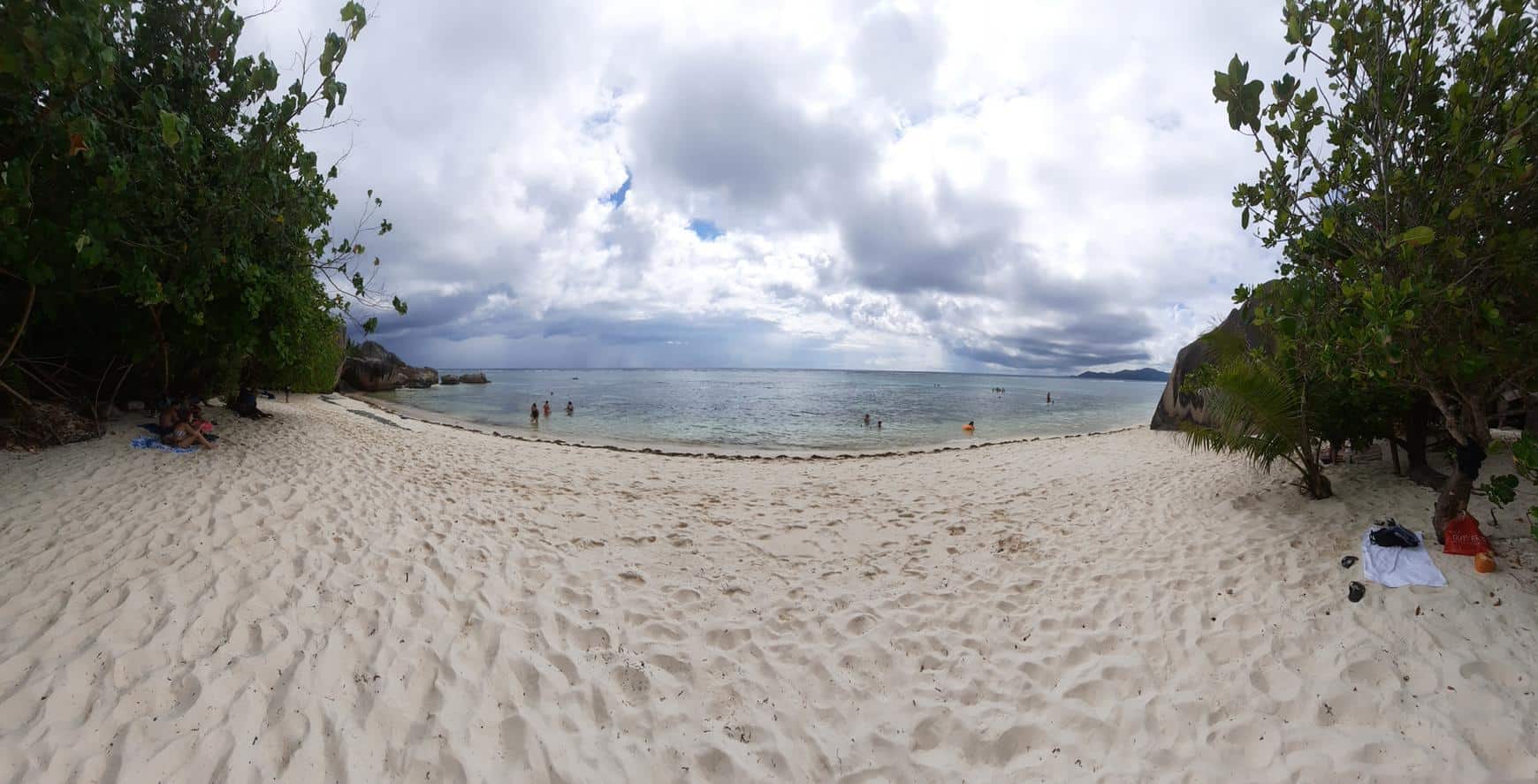
photography by: Omri Westmark
Situated in front of L’Union Estate Park’s entrance, La-Digue helipad is the local hub of Zil Air, a local chopper airline that offers aerial taxi service and scenic flights for the exceedingly wealthy tourists among us.

photography by: Omri Westmark
Like anywhere else in Seychelles, La-Digue has scores of breadfruit trees, attracting bats, birds and even local islanders who make Creole style delicacies out of it, most notably breadfruit croquettes.
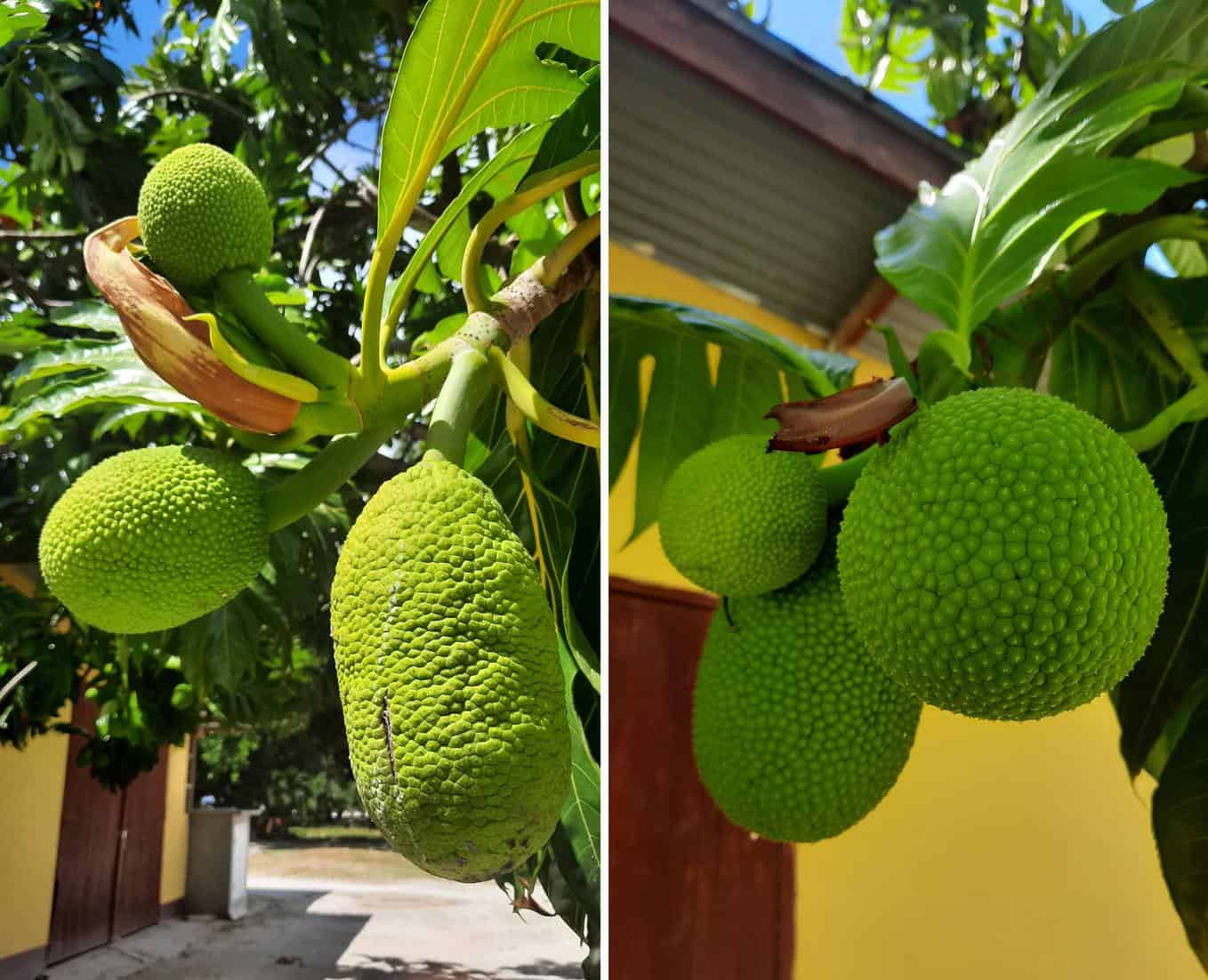
photography by: Omri Westmark
Situated on La-Digue’s main street, Notre Dame de L’Assomption Church stands out with its tall peach pastel façade, contrasted by its rather simplistic interior part. If you get lucky, your visit might coincide with a religious gathering, accompanied by Seychellois style choir.

photography by: Omri Westmark
La-Digue’s growing number of visitors in recent year is translated to a reasonable assortment of restaurants and bars as well. If you find yourself hopelessly thirsty in the middle of a scorching day, then a fresh smoothie made of local papayas, coconuts or mangos is the best remedy in that case. Alternatively, cold coffee is also available almost anywhere, yet it’s far better to ask for a separate cup of sugar syrup as locals tend to make it a bit over-sweetened.
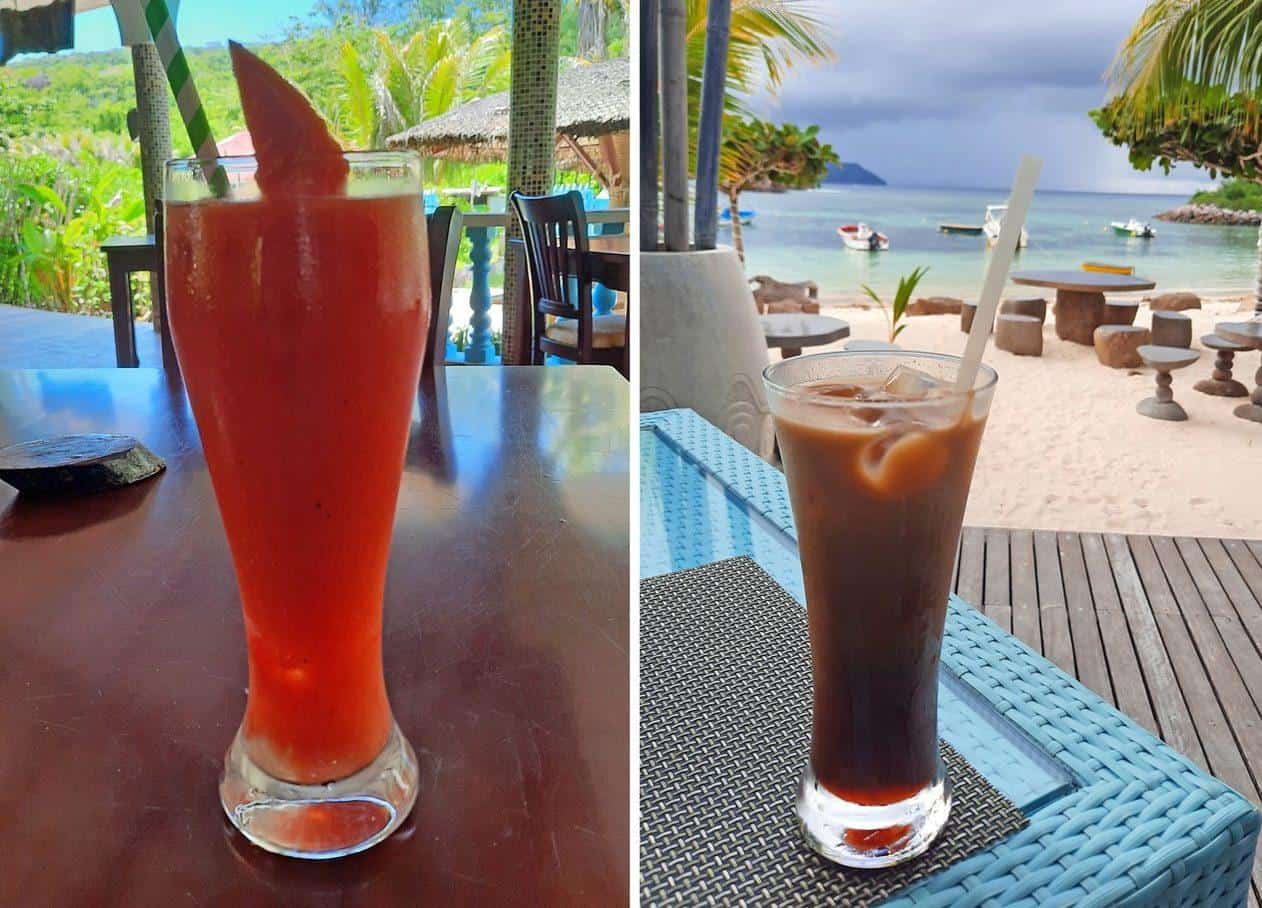
photography by: Omri Westmark
Sits nearby the inter-island ferry port, Fish Trap is considered as the island’s most popular restaurant, serving a variety of seafood dishes and creole style food, including a scrumptious shrimp salad with slices of orange and onion.

photography by: Omri Westmark